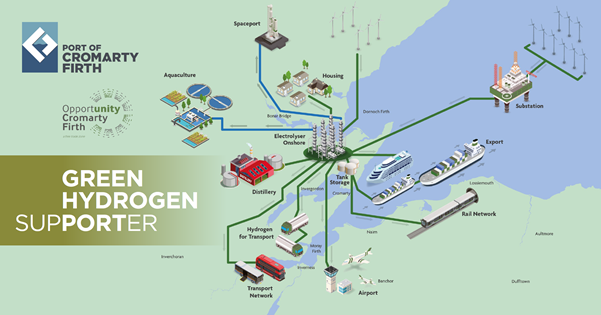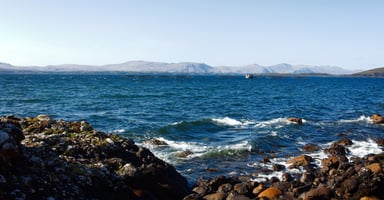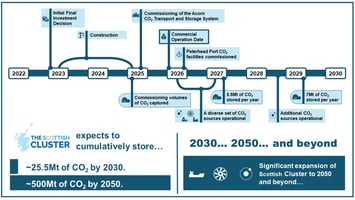16 July 2021
The Cromarty Firth would be the ideal home to the UK’s largest green hydrogen electrolyser, according to a study examining the feasibility of the project.
The North of Scotland Hydrogen Programme ‘Distilleries Project’ study identified a number of sites around the Firth deemed fit to host a 35MW electrolyser facility by 2024, producing up to 14 tonnes of green hydrogen per day.
The facility could be further expanded to meet growing demand from across Scotland, the UK and internationally for green hydrogen. This zero carbon fuel forms a key part of the Scottish Government’s decarbonisation strategy and would provide a massive contribution to the ambitions of becoming a leading hydrogen economy by 2030 and net-zero by 2045.
The study examined the viability of a green hydrogen hub in the Cromarty Firth supplying distilleries in the region with hydrogen at a competitive price to help decarbonise their heating and processes in making whisky.
It was backed by partners including ScottishPower, Pale Blue Dot (A Storegga Group Company), Port of Cromarty Firth, and drinks giants Glenmorangie, Whyte & Mackay and Diageo.
The report said the Cromarty Firth’s suitability was boosted by a large regional concentration of renewable energy potential, including future offshore wind development sites which would be able to supply the volume of clean electricity needed for the electrolyser.
Coupled with this substantial offshore wind resource stood an already significant existing infrastructure in the Cromarty Firth, as well as a proven track record of success in renewables, an experienced local supply chain and extremely strong links to industry, transport and heat networks.
The study acknowledges green hydrogen’s role as a sustainable, safe, long-term energy solution that is vital for those who cannot decarbonise their operations through renewable electricity alone.
It proposes a phased development for the facility. Phase 1 would see the electrolyser in place by 2024 to meet local and distillery demands and to prove the technology at this scale. A second phase would lead to an expansion of green hydrogen to meet growing energy demands nationally and internationally.
Following the feasibility study success, the project will now move into its next stage of development which will include detailed engineering, community engagement and commercial development. This will prepare the project for a final investment decision, by 2023.
Bob Buskie, Chief Executive of the Port of Cromarty Firth, said: “This is fantastic news for both the Cromarty Firth and for the country’s ambitions to become a leading hydrogen nation, with targets for Scotland to generate 5GW of renewable and low-carbon hydrogen by 2030 – enough to power the equivalent of 1.8 million homes.
“Phase 1 of the electrolyser could be up and running, and the first hydrogen produced, by 2024 in what will be one of the biggest electrolysers in the UK. Such a facility will be a game changer not only for industries across the Highlands and Scotland, but also for the UK and internationally as we will be able to export green hydrogen to energy markets around the globe.”
Barry Carruthers, Hydrogen Director at ScottishPower, said: “This is an industry leading project, harnessing the region’s rich, renewable energy to help support industries and sectors near the Port of Cromarty Firth on their own decarbonisation journeys. The North of Scotland Hydrogen Programme will see the Highlands become home to one of the UK’s largest green hydrogen facilities and we’re looking forward to moving ahead with our partners, the Scottish Government, Highland Council and all local stakeholders as we move into the next stages of the project.
“Now, more than ever, we need to see more projects like this being developed across the country. We’re in a climate emergency and so we have to focus on zero emission technologies - green hydrogen offers the long-term, sustainable, zero emission solution for industries, sectors and businesses that cannot be supported by renewable electricity alone. With only months to go until COP26, one of the most important climate summits, we’re showing what can be achieved when industry collaborates in order to tackle climate change.”
Nick Cooper, Chief Executive of Storegga, said: “This study confirms that the Cromarty Firth region is well positioned to play a leading role in Scotland’s green hydrogen economy. The consortium has jointly delivered a feasibility assessment that demonstrates the viability of the Phase 1 green hydrogen production plant. The plant will be developed in phases to become one of Europe’s largest hydrogen electrolysers.”
Dr. Peter Nelson, Operations Director for the Glenmorangie Company, added “We have all learnt a huge amount from the feasibility study into the potential of hydrogen as an alternative fuel source and excitingly for us it is firmly rooted in, and relevant to, the particular needs and challenges we all face in the North of Scotland.
It is a great example of collaboration across different companies and sectors and we look forward to progressing discussions further.”
Keith Miller, Distillation & Maturation Director, Diageo, said “This was a great feasibility study to understand the potential of hydrogen in the Cromarty Firth area and we look forward to understanding the next steps.”
Shane Healy, Director, Production and Distilling at Whyte & Mackay concluded “Cromarty Firth is home to a thriving community and this project has been a catalyst to come together and share our vision for what the future of the local economy and community around it will be”
Ends
Media Contact: Philip Gates on 07525 645350 or email philip.gates@morrison-media.co.uk
Notes to Editors
About North of Scotland Hydrogen Programme
The North of Scotland Hydrogen Programme has been established through Opportunity Cromarty Firth and brought together key partners who share ambitions for the region’s renewable, low carbon future. The programme aims to develop a state-of-the-art hub in the Cromarty Firth to produce, store and distribute green hydrogen at scale to the region, Scotland, other parts of the UK and Europe.
Achieving this will help to drive forward the regional objective to become a strategic national renewable energy hub and achieve Green Port status from the Scottish Government. This would allow the Highlands to capitalise on a 50-year pipeline of multi-billion pound offshore renewable projects and provide a once-in-a-generation opportunity for people and companies across Scotland.
The Cromarty Firth has been identified as an ideal location for the green hydrogen hub. This is due to its proximity to large-scale renewable electricity supply and a high level of demand locally for this sustainable fuel, including: distilleries, industry and transport (i.e. road, rail & aviation). This is backed by local supply chain expertise and The Highland Council’s ambition for the region to become a hydrogen economy.
Interest in the Cromarty Firth’s green hydrogen opportunity has grown rapidly and the North of Scotland Hydrogen Programme Masterplan has been featured in the Scottish Government’s Hydrogen Policy Statement.
The Opportunity Cromarty Firth ‘Hydrogen Working Group’ currently features 40 member organisations, with a shared interest in developing a state-of-the-art Green Hydrogen hub.
About Opportunity Cromarty Firth
Opportunity Cromarty Firth is a dynamic partnership of private and public sector organisations and academic bodies committed torealising the full potential of a sustainable 50-year, multi-billion-pound pipeline of renewable energy projects being constructed in Scotland.
It is backed by the Port of Cromarty Firth along with twelve other organisations; Global Energy Group, University of the Highlands and Islands (UHI), The Highland Council, HITRANS, Inverness Harbour Trust, Skills Development Scotland, Highland Resources, Anderson Strathern, Serimax, PSG Marine & Logistics, Johnston Carmichael and Semco Maritime.
Opportunity Cromarty Firth believes that the creation of a Freeport in the region would optimise the benefits to people and businesses not only in the Highlands but across Scotland; creating well-paid, sustainable jobs and significant supply chain opportunities.
Freeport are part of the UK Government’s post-Brexit economic growth strategy. Plans are in place to create around 10 across the UK which will have unique operational, regulatory and customs rules. Their objectives are to boost international trade, innovation and regeneration. The Scottish Government has given the go ahead for one Freeport – known as a ‘Green Port’ – in Scotland.
Post COVID-19, and in light of both Brexit and the managed long-term decline of the North Sea oil and gas sector, it is vital to Scotland’s future that sectors generating significant employment opportunities are supported and optimised. Central to this is the expected rapid expansion in renewable projects off the nation’s shores, including offshore wind and floating offshore wind. This expansion has the potential to be worth as much to the Scottish economy as the North Sea oil boom of the 1970s – predicted to be valued as much as £26 billion over the next 50 years.
The Cromarty Firth is uniquely positioned at the heart of the majority of these multi-billion pound offshore renewable energy projects. The location has complementary capabilities and capacity, having benefitted from over £100m of private sector led infrastructure investments over the last 10 years. The Firth has the facilities, supply chain and proven track record to service these projects, in a strategic location in close proximity to the majority of the development sites. This pipeline of work, if managed strategically and collaboratively, could secure sustainable work for generations. In addition to this, the Cromarty Firth has the legacy infrastructure and strategic location to develop a green hydrogen capability, essential to harnessing the full potential of offshore wind resources in Scottish waters. Such a renewables hub would be key to decarbonising the Highland region – a huge boost to Scotland’s 2045 net-zero emissions targets.
‘Green Port’ status would put the Cromarty Firth, the Highlands and Scotland at the forefront of a green economic revolution. It would draw huge inward investment, facilitate massive innovation and advance technology, boost education, research and industry, and train and reskill the local workforce to meet the massive opportunities on offer.
Critically, a ‘Green Port’ on the Cromarty Firth would add new business to Scotland and the UK and benefit other regions of the country, rather than displacing activity from elsewhere and jeopardising net tax revenues.





